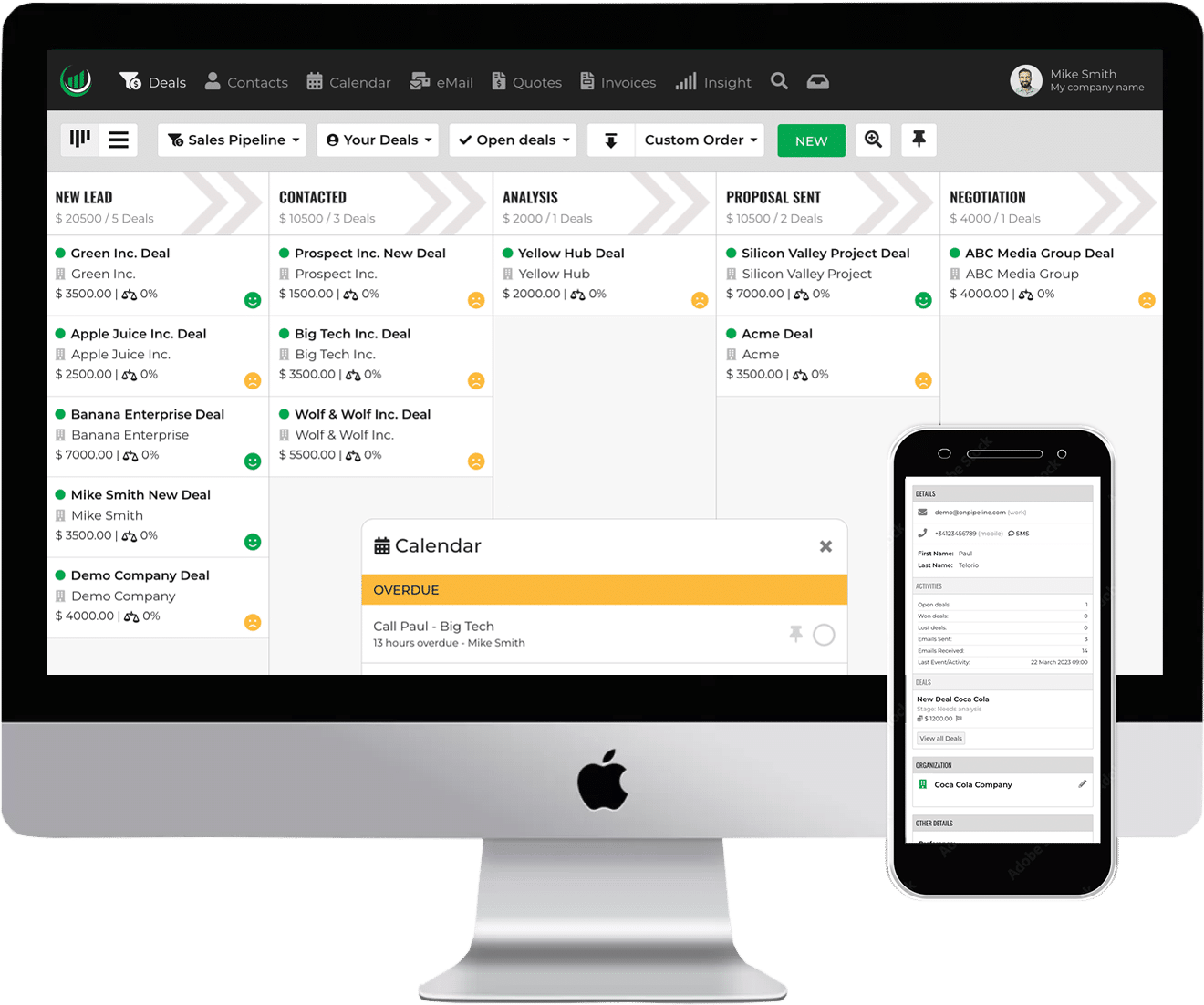KPIs are kind of like “numbers” that show if things are going the right way. Just like game scores, KPIs show businesses if they’re winning the game of success.
How do KPIs work?
Imagine you’re playing a game, and you want to know if you’re winning. KPIs are like the numbers on the scoreboard. They tell you how many points you have and if you’re getting closer to winning.
In business, KPIs work in a similar way. They’re specific numbers that show how a business is doing in different areas. For example, a restaurant might use KPIs to see how many customers come in each day or how much money they make.
Most Used KPIs
Key Performance Indicators, or KPIs, are like the MVPs (Most Valuable Players) of the business world. They help companies measure success and make smart decisions. Here are some of the most commonly used KPIs that businesses rely on:
Sales Revenue
This is like the boss KPI. It shows how much money a company makes by selling its products or services. It’s the ultimate measure of success. Sales performance KPI and metrics
Customer Satisfaction Score (CSAT)
This KPI is all about keeping customers happy. It’s like checking how much players enjoy a game. Businesses ask customers to rate their experience, and a higher score means happier customers.
Net Promoter Score (NPS)
Just like asking players if they’d recommend a game to others, businesses ask customers if they’d recommend their products or services. It helps measure customer loyalty.
Website Traffic
For online businesses, this KPI is like counting how many people come to play your game. More visitors often mean more chances for success.
Conversion Rate
Imagine how many people who visit a store actually buy something. That’s the conversion rate. For online businesses, it’s the percentage of visitors who take the desired action, like making a purchase.
Customer Acquisition Cost (CAC)
This is like knowing how much it costs to get a new player to join the game. Businesses calculate how much money they spend to bring in each new customer.
Churn Rate
Just like players quitting a game, customers can leave too. The churn rate shows how many customers stop using a product or service over a certain time.
Return on Investment (ROI)
Businesses want to know if their efforts are paying off. ROI measures how much money is earned compared to how much was spent. Read more about marketing KPIs
Employee Satisfaction
Happy employees work better. This KPI is like checking if the players are enjoying the game. Businesses measure how satisfied their employees are.
Inventory Turnover
For businesses that sell physical products, this KPI is like knowing how fast items are flying off the shelves. It helps manage stock efficiently.
Setting a KPI
Setting Key Performance Indicators (KPIs) is like drawing a roadmap to success. These steps guide you in choosing the right KPIs for your business goals. Let’s walk through the process:
1. Define Your Goals
Just like planning a journey, start by knowing where you want to go. Define your business objectives clearly. Are you aiming for higher sales, better customer service, or something else?
2. Choose What to Measure
Think of KPIs as signposts on your journey. Select specific things to measure that directly relate to your goals. For example, if your goal is customer happiness, a KPI could be the Customer Satisfaction Score (CSAT).
3. Make It Clear
Like giving directions, your KPI should be crystal clear. It should be easy to understand and leave no room for confusion. Clear KPIs ensure everyone is on the same page.
4. Quantify the Measurement
KPIs are like numbers on your map. Quantify what you’re measuring. For instance, if you’re tracking website traffic, the KPI could be the number of unique visitors per month.
5. Set Targets
Think of KPIs as goals you want to reach. Set achievable targets for each KPI. It’s like aiming to travel a certain distance each day on your journey.
6. Consider Timeframes
Just like planning a trip’s duration, decide the timeframe for each KPI. Will you measure it daily, weekly, monthly, or annually? Timeframes give context to your progress.
7. Align with Responsibilities
Distribute tasks like assigning seats in a vehicle. Make sure someone is responsible for each KPI. It helps keep everyone accountable and focused.
8. Collect Data
KPIs are like checkpoints on your route. You need data to measure them. Gather the necessary data sources and tools to collect accurate information.
9. Analyze
Like stopping to read the map, analyze your KPIs regularly. Understand what the numbers mean and whether you’re on track to meet your goals.
10. Adjust as Needed
Just as you might take a detour if needed, be open to adjusting your KPIs. If circumstances change or you’re not hitting targets, modify your KPIs accordingly.
11. Communicate Progress
Share your journey updates, like sharing your road trip photos. Regularly communicate the progress of your KPIs with your team or stakeholders.
12. Celebrate Achievements
Like celebrating reaching landmarks on your trip, celebrate when you achieve your KPI targets. It boosts morale and motivates everyone.
What makes a good KPI?
A good Key Performance Indicator, or KPI, is like a super useful tool that helps businesses measure success. But what exactly makes a KPI “good”? Let’s dive into it!
Relevance
A good KPI is like a map that guides you in the right direction. It’s closely connected to what you’re trying to achieve. For example, if you’re running a restaurant, tracking the number of customers coming in each day is a relevant KPI.
Measurability
Imagine trying to track something you can’t see. A good KPI is like a clear number that you can measure easily. For instance, measuring the amount of money earned from online sales is something you can count.
Specificity
Good KPIs are like a zoomed-in camera. They focus on one specific thing, not a whole bunch. Instead of just looking at “sales,” you might focus on “monthly new subscriptions.”
Actionable
A good KPI is like a helpful signpost. It shows you what to do next. If you see that customer satisfaction scores are dropping, you’ll know you need to improve something in your service.
Timeliness
Imagine checking the weather forecast from last week. It wouldn’t help, right? A good KPI gives you information at the right time. Tracking daily website traffic helps you keep up with what’s happening now.
Consistency
Like a reliable friend, a good KPI is consistent. It’s something you can track over time and compare easily. If you’re measuring employee productivity, you’d want to measure it in the same way every month.
Challenging but Achievable
Think of a KPI as a goal. It should push you a bit, but it’s still doable. If you’re aiming to increase sales by 10% in a month, that’s a challenge you can work towards.
Alignment with Goals
A good KPI is like a puzzle piece that fits perfectly. It aligns with your business goals. If you want to expand internationally, tracking the number of new international customers is a great KPI.
Why are KPIs important?
KPIs help businesses make smart decisions. If a game player sees they’re losing, they might change their strategy. Similarly, if a business sees KPIs going down, they can figure out what’s wrong and fix it.
Benefits of KPIs
Key Performance Indicators (KPIs) offer a bunch of awesome advantages that help companies grow and improve. Let’s take a look at some of the benefits of using KPIs:
Clarity
KPIs are like turning on a bright light in a dark room. They give you a clear picture of how your business is doing. You can see where you’re succeeding and where you need to work harder.
Focus
KPIs are like a spotlight on what matters most. They help you concentrate on your main goals and stay away from distractions. It’s like aiming straight for the bullseye.
Smart Decision-Making
KPIs are like a compass that guides you. They give you important data to make smart choices. It’s easier to decide when you have the right information.
Accountability
KPIs are like a scorecard that everyone can see. They hold you accountable for your goals. When everyone knows the targets, they work together to achieve them.
Motivation
KPIs are like cheerleaders that boost your team’s spirits. When you see progress and success, it motivates you to keep going and do even better.
Improvement
KPIs are like a coach that helps you improve your game. They show you where you’re falling short so you can work on those areas and get better.
Measurement
KPIs are like a ruler that helps you measure success. You can track your progress over time and see if you’re getting closer to your goals.
Benchmarking
KPIs are like a yardstick that lets you compare. You can see how you’re doing compared to industry standards or your own past performance.
Communication
KPIs are like a common language everyone understands. They make it easy to talk about goals and progress with your team, stakeholders, or partners.
Alignment
KPIs are like puzzle pieces that fit perfectly. They make sure everyone in your business is on the same page, working towards the same goals.
Adaptation
KPIs are like a radar that helps you see changes. If something’s not going as planned, KPIs show you early so you can adapt and steer in the right direction.



